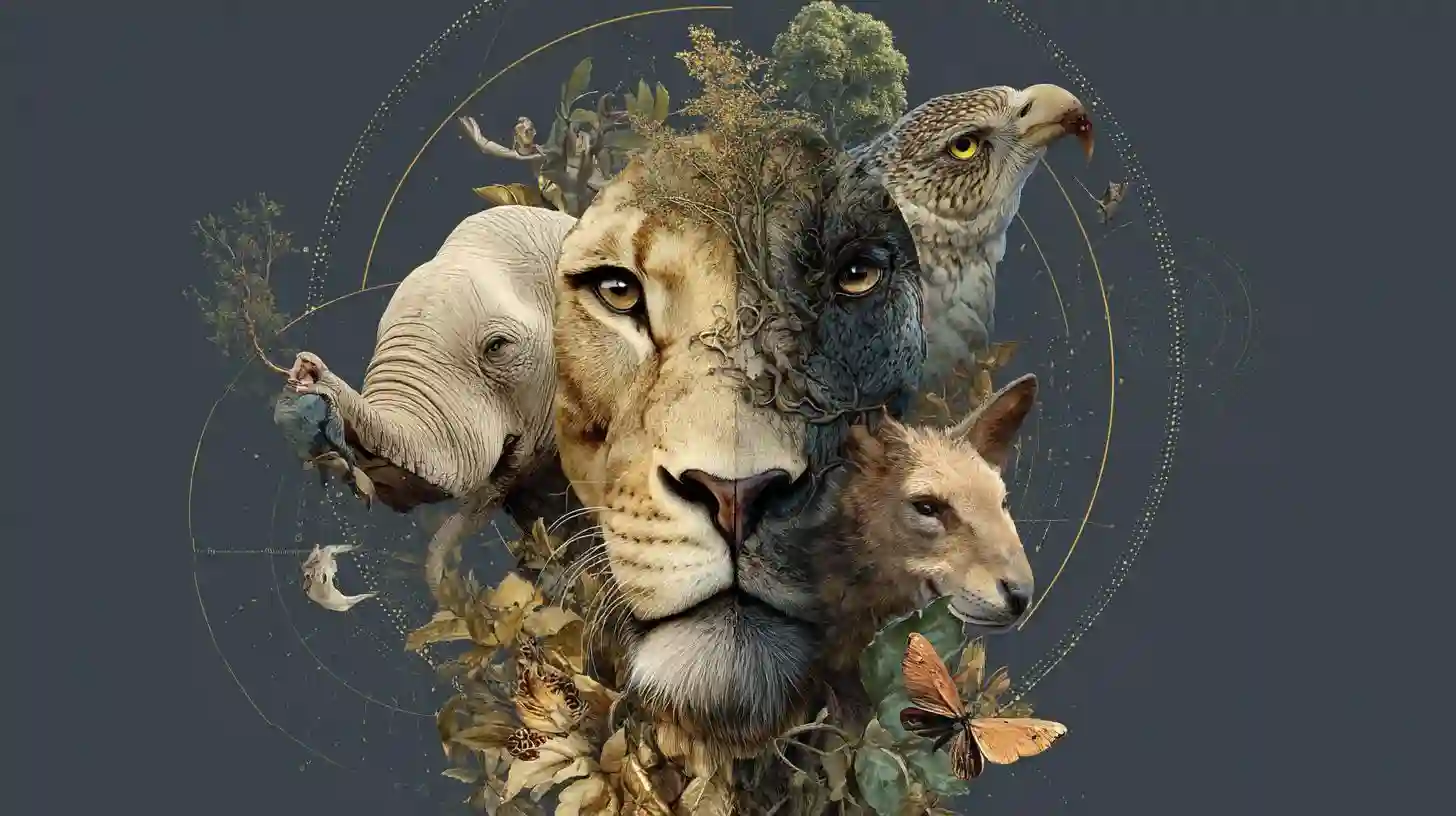
In the vast and diverse world of animals, nature has endowed many creatures with extraordinary abilities that continue to baffle and amaze scientists and nature enthusiasts alike. These abilities are not only fascinating but also crucial to the survival of the species, helping them adapt to their environments, hunt for food, and protect themselves from predators. From the depths of the ocean to the highest mountain peaks, animals exhibit remarkable traits that make them uniquely suited to their habitats. These abilities are a testament to the complexity of life on Earth and the ingenuity of evolution.
One of the most astounding animal abilities comes from the world of camouflage. The cuttlefish, for instance, is a master of disguise. This cephalopod can change its skin color and texture in a matter of seconds to blend seamlessly into its surroundings. By using specialized cells called chromatophores, which contain different pigments, cuttlefish can mimic the colors and patterns of their environment, from sandy ocean floors to vibrant coral reefs. This skill allows them to avoid predators, ambush prey, and communicate with other cuttlefish. What makes this ability even more fascinating is their ability to perceive their environment with remarkable clarity, allowing them to adapt to changes in real time.
Similarly, the chameleon is another animal known for its color-changing prowess. However, while the chameleon also uses chromatophores to alter its color, it does so primarily for communication and territorial purposes rather than for camouflage. A chameleon’s color shift can signal various emotional states, such as aggression or mating readiness. It also serves as a social tool to deter rival males or attract females, demonstrating how color-changing abilities are not just a survival tactic but also a means of communication within the species.
Equally fascinating are the abilities of animals that can navigate vast distances with ease, despite lacking the technology we rely on. The monarch butterfly is famous for its migratory journey, traveling thousands of miles from North America to central Mexico. What is truly remarkable is that these butterflies navigate using the Earth’s magnetic field, a phenomenon still not entirely understood. They also rely on celestial cues, including the position of the sun, to guide them. Monarchs possess an innate sense of direction that leads them to the same overwintering sites year after year, an incredible feat considering their small size and delicate structure.
In the animal kingdom, some creatures have developed an extraordinary sense of orientation that allows them to communicate and navigate in ways that humans can only dream of. The bat, with its use of echolocation, stands as one of nature’s most impressive navigators. By emitting high-frequency sound waves that bounce off objects, bats can "see" their surroundings in complete darkness. This echolocation ability helps them locate prey, avoid obstacles, and even communicate with other bats. What makes this ability so impressive is the precision with which bats can detect tiny changes in the environment. Their sophisticated auditory system allows them to identify the size, shape, and texture of objects based on the sound waves reflected back to them.
Another animal that uses sound in a remarkable way is the sperm whale, which relies on echolocation to navigate the depths of the ocean. However, unlike bats, sperm whales use a specialized organ called the melon, which focuses sound waves in a way that allows them to "see" through the murky waters. This ability helps them find prey deep underwater where light cannot reach, showcasing the adaptability of life in extreme environments.
The animal world also contains some truly unique survival strategies that are nothing short of miraculous. The axolotl, a type of salamander, possesses the incredible ability to regenerate lost body parts, including limbs, spinal cord, heart tissue, and even parts of its brain. This regenerative power is so advanced that scientists are studying it to understand how humans might one day be able to regenerate damaged tissues. The axolotl's remarkable healing abilities are not limited to minor injuries; it can regrow complex structures, making it one of the most fascinating creatures in the animal kingdom.
Some animals have developed incredible resilience in the face of harsh environmental conditions. The tardigrade, also known as the water bear, is a microscopic creature that can survive in extreme environments that would be lethal to most other organisms. Tardigrades have been found thriving in the vacuum of space, enduring high radiation levels, and surviving temperatures ranging from near absolute zero to well above boiling point. This ability to withstand such extreme conditions is due to their ability to enter a state called cryptobiosis, in which they lose almost all of their water content and enter a suspended animation. In this state, they can survive without food or water for years, only to revive when conditions become more favorable.
Some animals have taken their survival instincts even further, developing extraordinary forms of communication. The African elephant, for example, uses a complex system of low-frequency rumbles and vibrations to communicate with other elephants over long distances. These sounds, which are below the range of human hearing, travel through the ground and can be detected by other elephants miles away. This allows them to share information about water sources, danger, or even the presence of other herds. Elephants’ ability to communicate in such a sophisticated manner highlights the importance of sound in the animal world and the intricate ways in which species interact with their environment.
From the intricate mechanisms of echolocation to the extraordinary regenerative abilities of certain species, the animal kingdom is full of remarkable creatures whose abilities continue to inspire awe. Nature’s complexity and the diverse ways in which animals adapt to their environments speak to the ingenuity of evolution and the endless potential for discovery in the natural world. These extraordinary abilities not only showcase the incredible diversity of life on Earth but also remind us of the vast mysteries that still lie within the natural world, waiting to be unlocked.